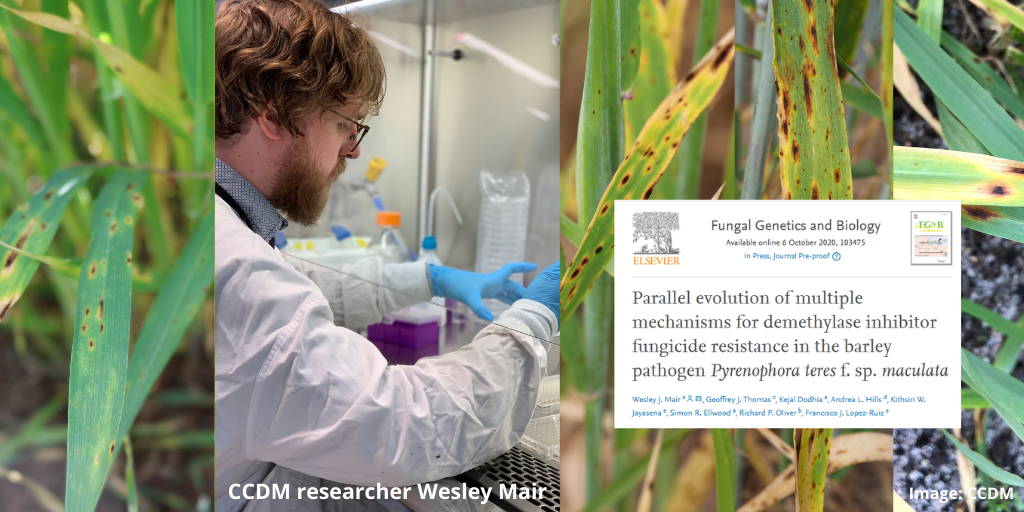Latest fungicide resistance research, led by the Centre for Crop and Disease Management (CCDM) in collaboration with plant pathologists from Department of Primary Industries and Regional Development – DPIRD has once again reinforced the value in growers adopting integrated disease management strategies for their crops.
Australian grain growers are being advised to use more resistant varieties, incorporate different fungicide modes of action into their chemical management plans, maintain good crop rotation, and stubble and green bridge management to help reduce disease pressure on their barley crops.
The new research from the CCDM, part of a Grains Research and Development Corporation project, examined mechanisms for DMI (Group 3, demethylase inhibitor) fungicide resistance in the pathogen that causes spot form net blotch (SFNB) in barley, and has just been published in ScienceDirect‘s Fungal Genetics and Biology.
Lead author, CCDM’s Wesley Mair examined 286 SFNB isolates obtained from hundreds of barley samples around WA by DPIRD plant pathologists, growers, agronomists and various field trials, and screened them for sensitivity to DMI fungicides.
“What we found was parallel evolution of multiple mechanisms responsible for DMI resistance in the barley pathogen that causes SFNB,” said Mr Mair.
“This tells us that the pathogen is building up its own defences against the Group 3 fungicides by constantly mutating and this is happening in multiple ways across different populations with resistance continuing to develop.”
The best way to combat this evolution according to CCDM’s fungicide resistance expert Dr Fran Lopez-Ruiz is to keep management strategies dynamic by not relying on the one mode of action.
“To prevent further selection of resistance to DMI fungicides in WA, active ingredients should be applied in mixture or alternation with other modes of action such as QoIs (Group 11) and SDHIs (Group 7), and in partnership with an integrated disease management approach,” said Dr Lopez-Ruiz.
For more details on the research and findings you can read the full paper here:
Author: CCDM. The CCDM is a co-investment by the Grains Research and Development Corporation and Curtin University.

